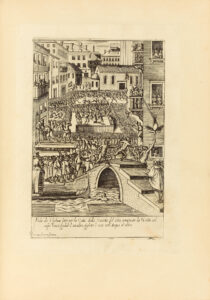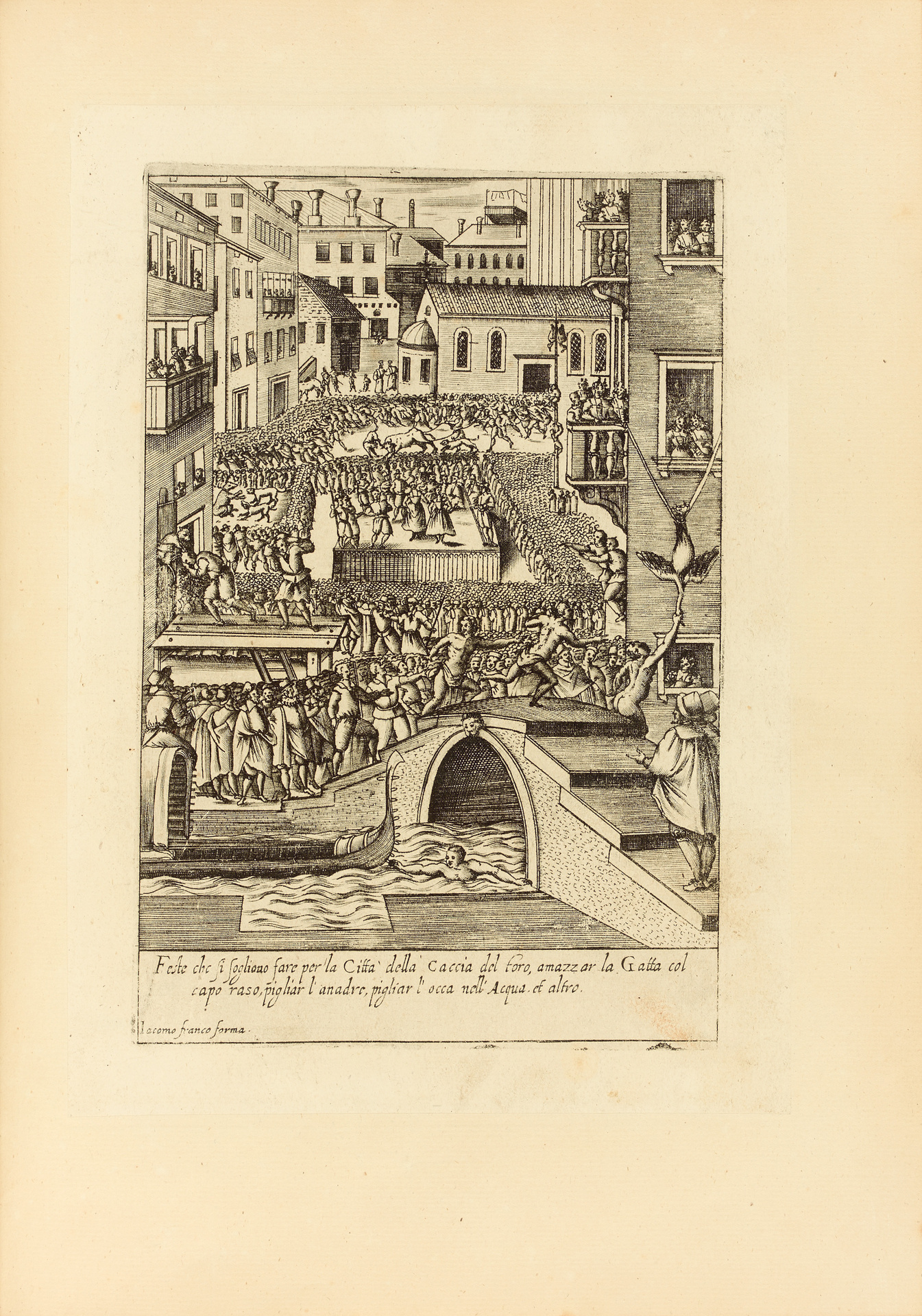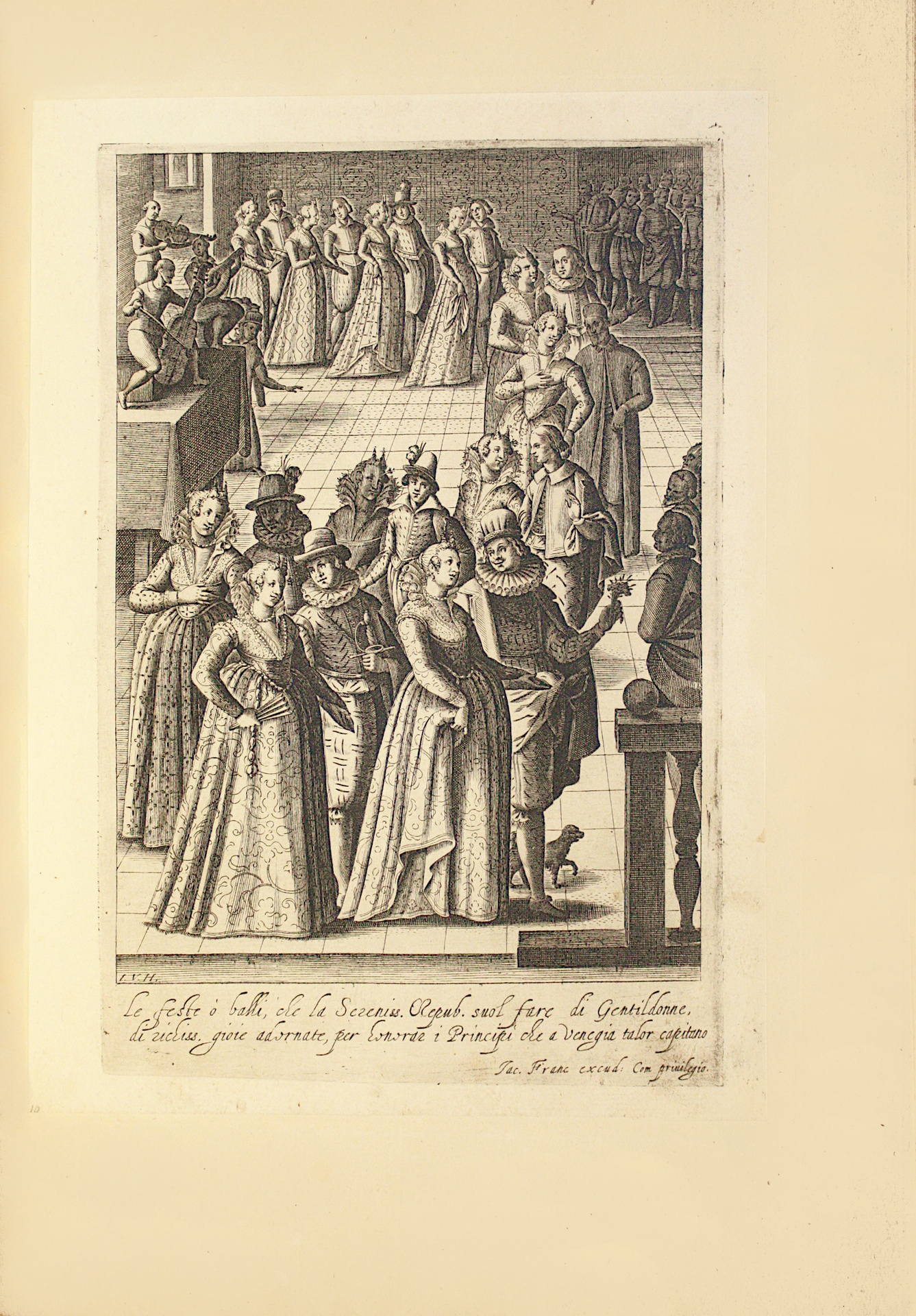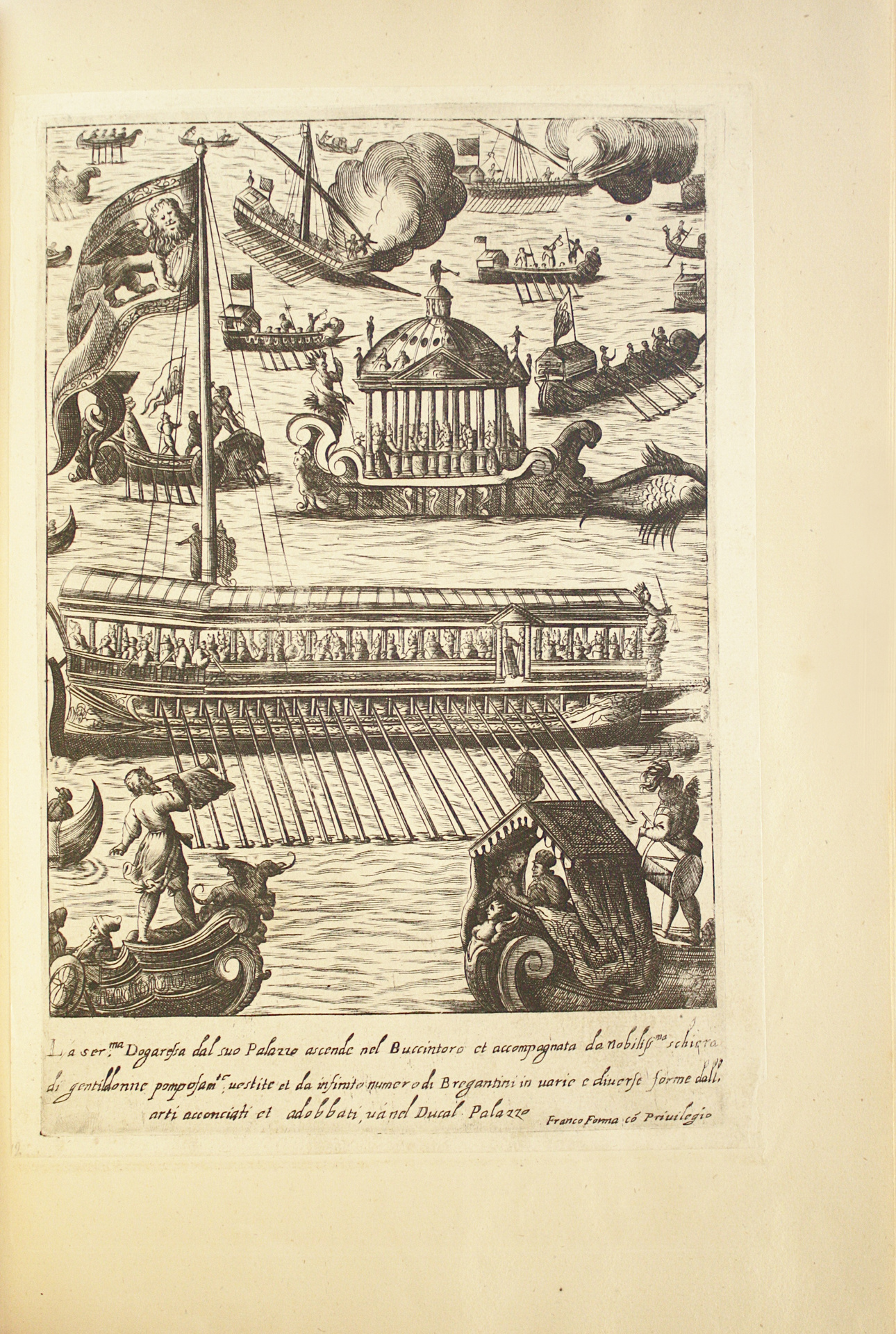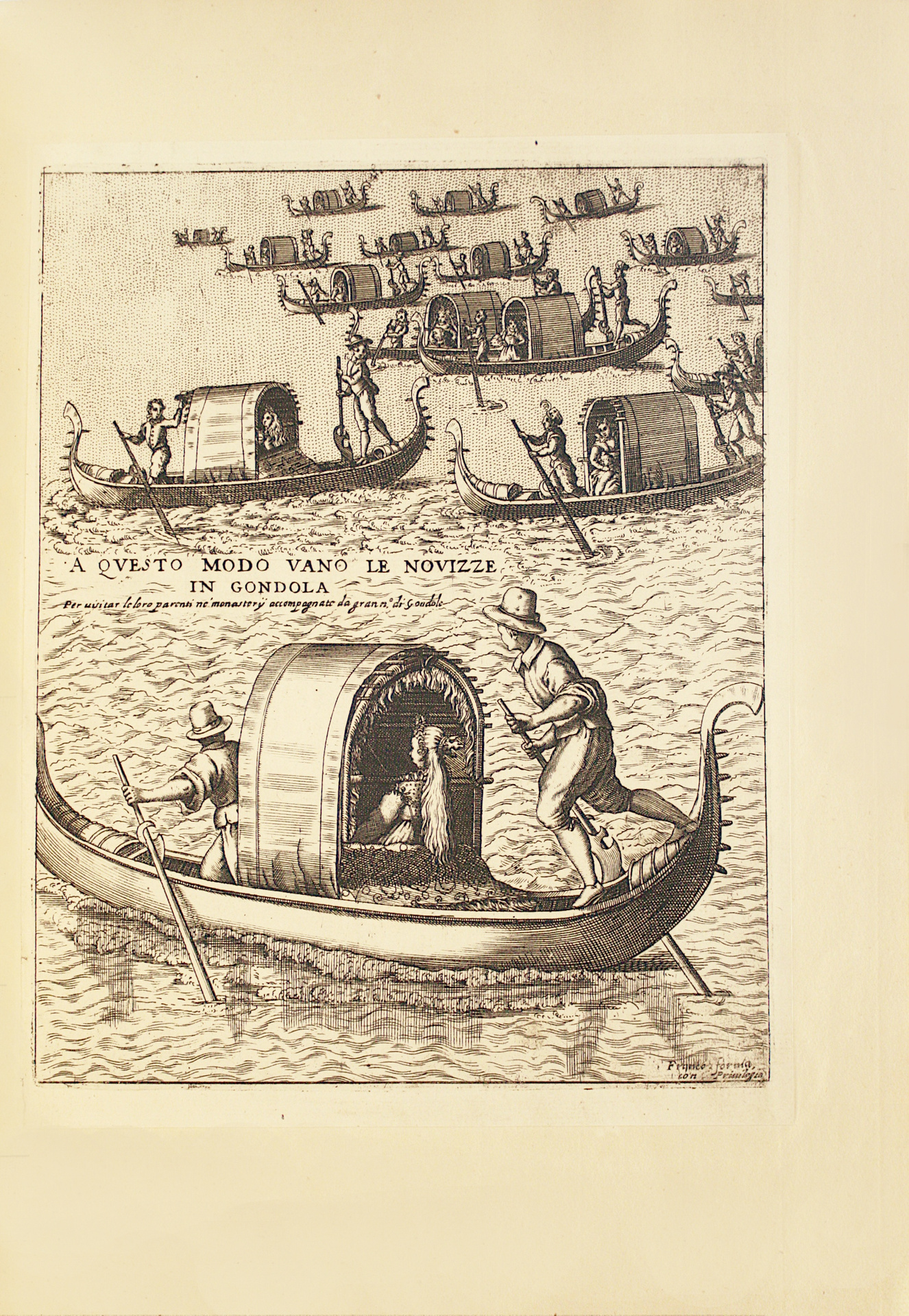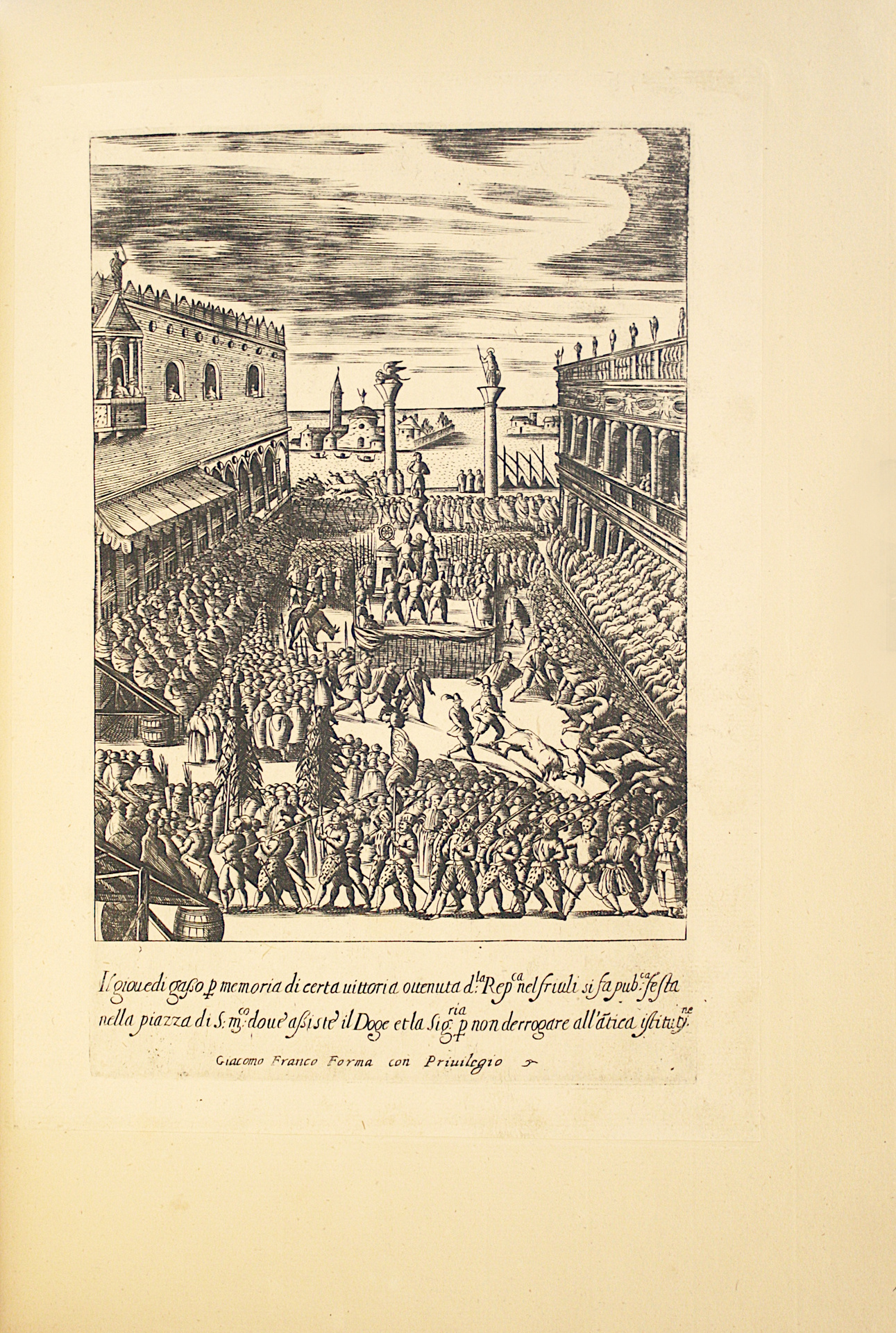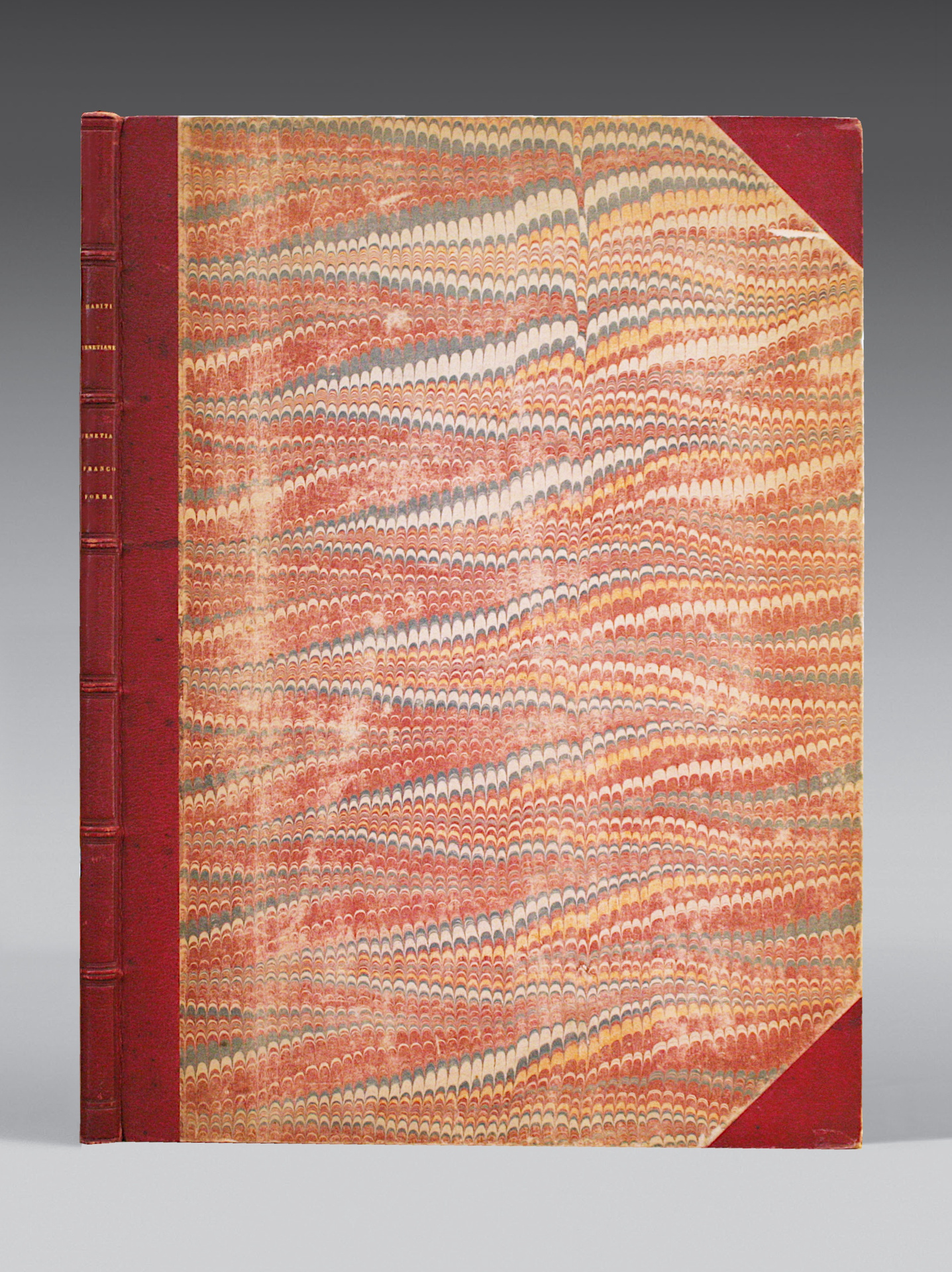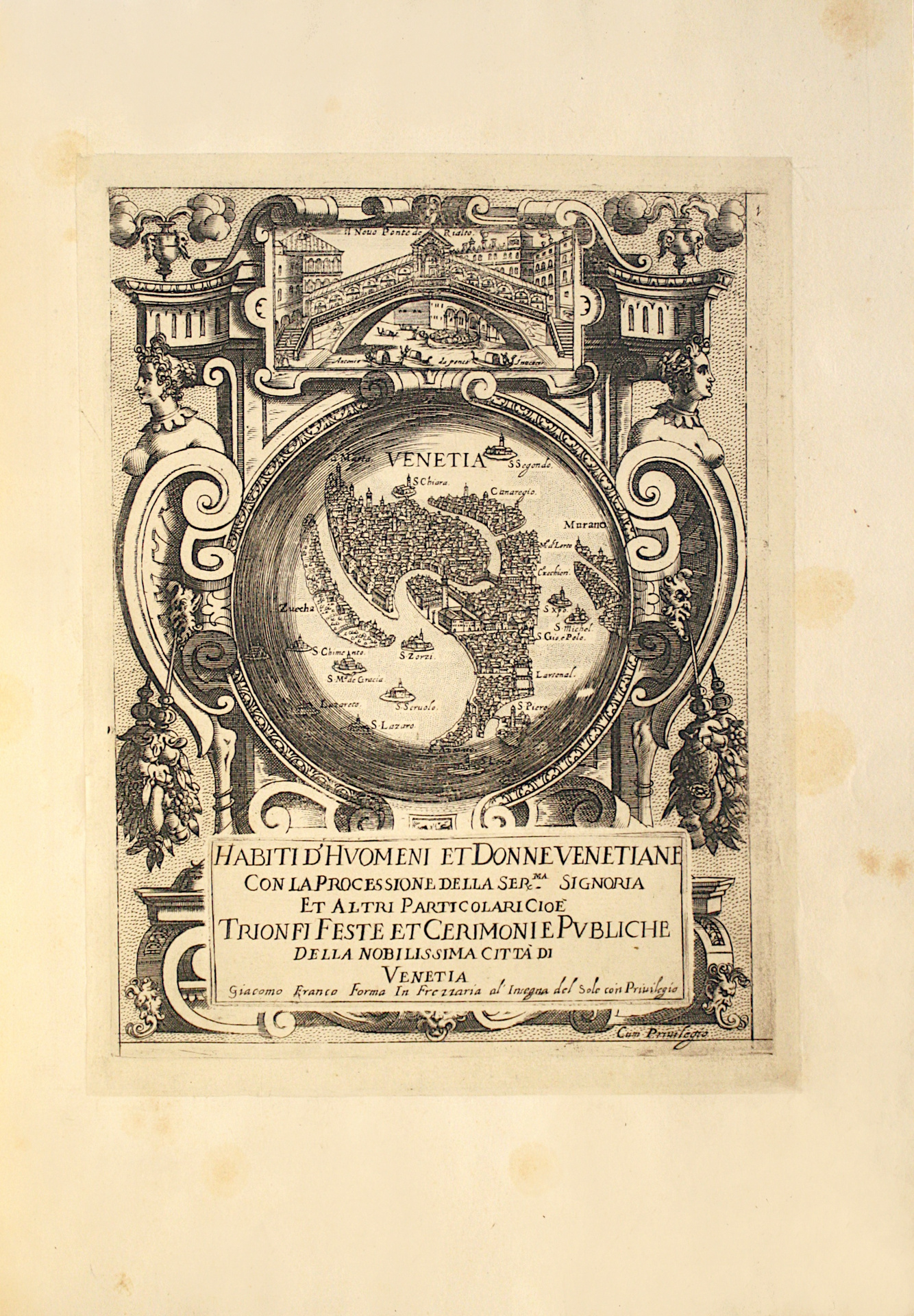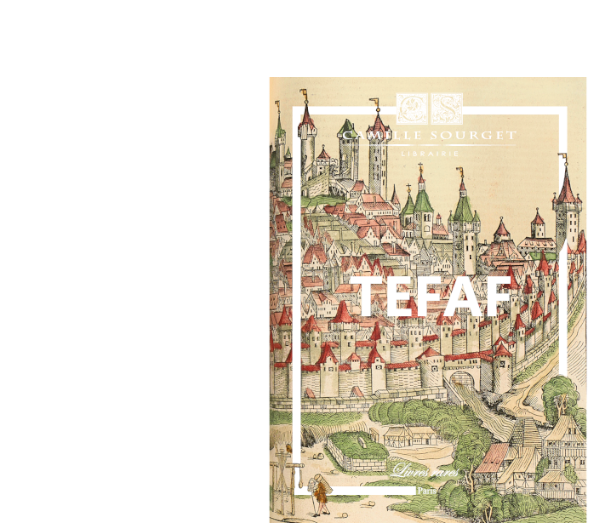Venice, Giacomo Franco Forma in Frezzaria al Insegna del Sole con privilegio, s.d. [1610].
Small folio volume.
“1 . (title engraved with same view of Venice than the one for “Habiti delle Donne”), 1 l. not numbered (dedication to Vincent de Gonzague de Mantoue dated 1st January 1610 and printed in roman characters ), 25 plates out of pagination and not numbered.
Those plates represent 34 figures of men and women in very rich Venitian costumes, life scenes,
festivities.” (Colas, n° 1108).
The present copy includes 1 engraved title with a view of Venice and 24 plates bêring 30 figures of men and women; the dedication lêf and one plate including 4 figures are missing but the number and sequencing of the engravings vary grêtly between copies of the same edition (“this fine collection of detailed views and scenes of Venetian life and costume was issued with varying numbers of plates”). Some foxing in the margin of the frontispiece. All mounted on large paper and bound around 1850 by Duru in red quarter morocco.
360 x 260 mm. Dimensions of the engravings: 258 x 190 mm.
Very rare first edition of one of the most famous books on Venice, its festivities, costumes and activities around 1600.
Colas, Bibliographie Générale du Costume, n°1108, col. 384-5; Katalog Der Freiherrlich Von Lipperheide'schen Kostümbibliothek (repr. 1963), n°1324, p. 527.
The copy of the British Museum only contains 20 plates out of 25 and one title lêf is missing.
The copy is composed of 26 copper plates including one double plate, all, except one, signed by Giacomo Franco. The engraving named Feste che si sogliono fare per la città della caccia del toro, amazzar la Gata col capo raso, pigliar l’anadre, pigliar l’occa nell’acqua et altro fêtures games with animals: a bêr fighting with dogs, a tied up cat, a goose being plunged into water, a duck hanging from a mast and a chased bull. Attested since the Middle Ages, bull hunting is a traditional carnival game in the Renaissance, particularly in Rome and Venice”. (Virtual exhibition organized by the Mazarine Library Libri italiani lecteurs français, "Balls, festivals and banquets").
“This book of engravings depicts the costumes, festivals, and social life of êrly seventeenth-century Venetians. There is no text other than a short descriptive sentence at the bottom of êch engraving. Major Venetian landmarks are êsily recognizable, and the small ovoid map on the title-page is regarded by some scholars as an important example of êrly Venetian cartography.
Very little is known about the Venetian engraver Giacomo Franco. The son of painter Giovanni-Battista Franco (1510-1561), with whom he began his artistic training at the age of eleven, he worked as a painter, engraver, woodcutter, and dêler in graphics and books. For a while he studied in Bologna with Agostino Carracci (1557-1602). In the êrly 1580s they opened a private têching academy that soon became a center for progressive art. In their têching they laid special emphasis on drawing from life, and clêr draughtsmanship became a quality particularly associated with their school.
In 1595 Franco took over his father’s workshop and eventually became a well-known publisher. Although he was not documented as belonging to the booksellers’ or printers’ guilds, he is recorded in 1606 and again in 1619 as belonging to the painters’ guild. Franco’s determination to be recognized as an artist is reflected in his will, in which he refers to himself as a “designer.”
The Habiti d’huomini is a potpourri of depictions of Venetian costumes, processions, and celebrations. Citizens are seen watching regattas, fighting on bridges, conversing in the Piazza San Marco and on the Rialto Bridge, and marching in ceremonial procession into the Doge’s Palace with flags flying and horns and flutes playing. Even the ubiquitous laundry is seen hanging on the line in the background. Men with rifles hunt ducks in the lagoon. The Doge’s mighty Bucintoro warship returns from battle, escorted by gondolas and saluted by cannon explosions. Carnival, of course, has a page of its own, which depicts citizens in masks, some of whom seem to be making best use of the cover of darkness to contact a prospective lover. The appropriately dressed widow is pictured hêvily veiled, and a married gentlewoman has two outfits from which to choose, one for inside the house, another for outside. The men are almost as ornately dressed as the women. The Doge, in his palace wêring fine brocade and a crown, moves his hand in a sort of blessing, as – through a window behind him – life in the Piazza San Marco goes on”. (The Boston Athenaeum Museum)
Precious and bêutiful copy coming from the library of the 19th century A. Brölemann with ex-libris.
